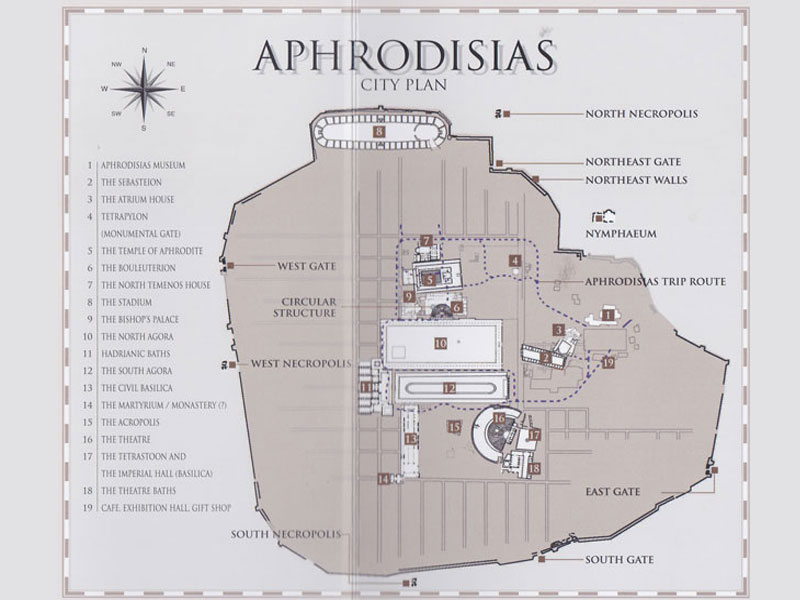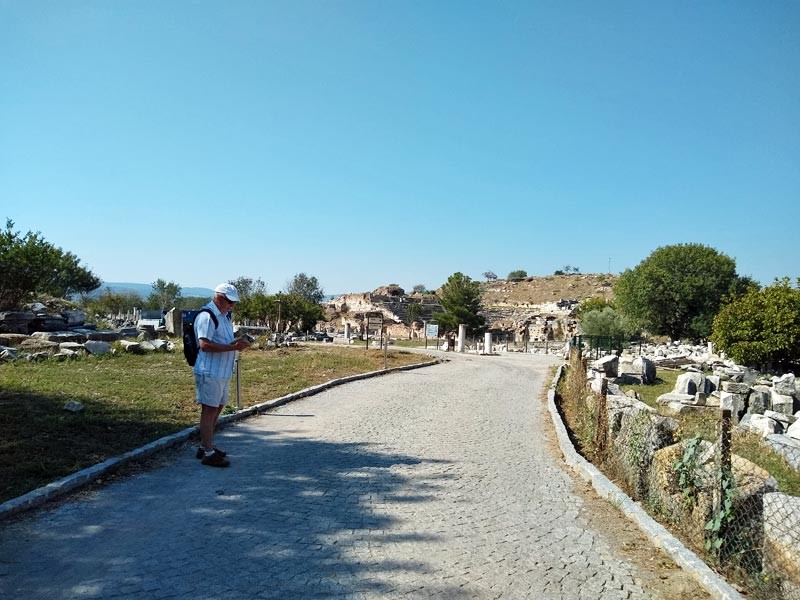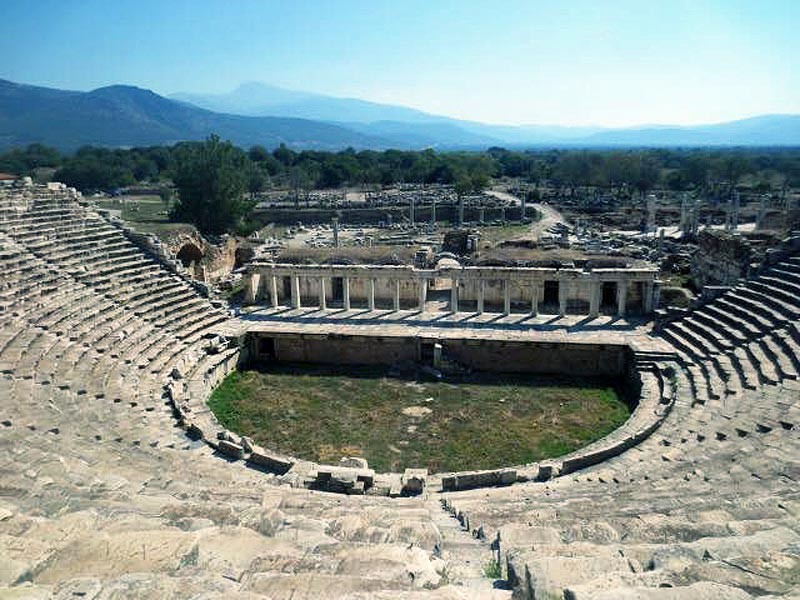Aphrodisias - a visit to the ancient city of love
The ruins at Ephesus generally get most of attention when it comes to the ancient sites of Turkey, but Aphrodisias (or Afrodisias) has long been on our 'must visit' list. Named after Aphrodite, the Greek goddess of love, who had here her unique cult image, the city was built near a marble quarry, and sculpture in marble from the city became famous in the Roman world.
A group of six of us set out for the 200km journey from Turunç to see what all the hype was about and, as it turned out, we were not disappointed! We had decided to stay overnight at the village of Geyre just 3km from the ancient city so that we could start our tour as soon as the site opened and before the weather got too hot or the crowds too large.
Our journey to Geyre took about 4 hours with a stop for lunch - a fairly easy drive firstly through pine forests and then fertile farming areas with melons, corn, beans and many other crops under cultivation. We were the only guests at the seven-roomed Anatolia Hotel which was quiet, beautifully maintained and very friendly. Geyre itself is nothing special - a small, very Turkish, farming village. It had a mosque, school, 'boys club', convenience store (no alcoholic drinks) and a barber's shack where I got a great shave for just 10TL. Every residence seemed to have a tractor and some sort of agricultural implement parked outside! We dined at the hotel's nearby restaurant which looked like it could accommodate several hundred guests - we were the only customers. Dinner was excellent and very relaxing.
After an early breakfast the next day, we made the short journey to the 'official' Aphrodisias car park, paid our 10TL and were chauffeured to the site entrance by tractor - quite an experience! We were the first visitors of the day - the entrance fee was a reasonable 24TL. We bought guide books and water at the cafe near the entrance and planned our tour.
We started our tour at the Aphrodisias Museum. It is superbly set out, contemporary in design and truly amazing. For several centuries the city had a School of Sculptors and the busts and carvings on display bore testament to their skill. We had the museum to ourselves for over an hour before we went back into the sun to begin our outside tour.

The recommended tour follows a sort of circle with a detour off to the Stadium - see the dotted blue line on the above map. It can be taken in either direction and follows a mainly flat, block-paved, well-signed footpath. Every main building is signposted and well described. Unlike Ephesus, there are lots of green areas, shady trees and even one or two purpose-built, covered rest stops. Crucially, the absence of crowds means that you can walk at your own pace, pause to take pictures, consult your guidebook or map and even backtrack if you want to revisit something. This part of our visit took us about 3 hours and we met just one Russian tour party, a few intrepid independent visitors like us and that was it. It was very relaxing and hugely rewarding as a cultural experience.
We finished our tour in the early afternoon back at the cafe, grabbed ice-creams or cold drinks. We discussed our return route - agreeing to go via Nazilli and Yatağan - a little longer in distance and significantly longer in time as we discovered because of the hilly, twisty roads. We arrived back in Turunç at about 5PM - rather exhausted but fulfilled and determined to share our experience with others.
If you enjoyed Ephesus, you will love Aphrodisias: see it before it becomes too popular, commercialised and over-crowded.
Cinta, Drew, Glen, Hugh, Iain, & Nan
 I am not aware of any Turunç-based travel agencies which operate tours to Aphrodisias - so this is something you'd need to organise independently.
I am not aware of any Turunç-based travel agencies which operate tours to Aphrodisias - so this is something you'd need to organise independently.
So, if you'd like more details of this experience, how we planned it, what we'd do differently (not much actually) then we'll happily share this. Just e-mail us at feedback@myturunc.com.
Do check out the information on Aphrodisias on Tom Brosnahan's excellent Turkey Travel Planner website: www.turkeytravelplanner.com/go/Aegean/aphrodisias/index.html























 1
1 2
2 3
3 4
4 5
5 6
6 7
7 8
8 9
9 10
10 11
11 12
12 13
13 14
14 15
15 16
16 17
17 18
18 19
19 20
20 21
21 22
22 23
23